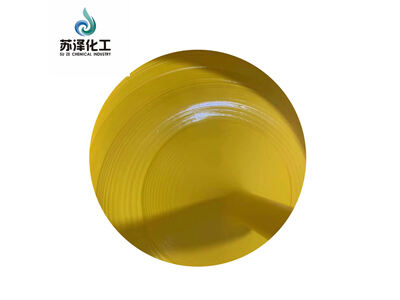Fundamental Mechanism of Polymer Initiation
Benzoyl peroxide (BPO) is a be-all-and-end-all to synthetic polymer chemistry because of it exceptional capability of producing free radicals under controllable conditions. Under thermal activation, the unsound oxygen-oxygen bond in benzoyl peroxide experiences a homolytic cleavage results formation of highly reactive benzoyloxy radicals. These radical species become indispensable in causing chain-growth polymerization reactions as they attack π-bonds of their monomer units. The kinetics of the decomposition of benzoyl peroxide are predictable with the half-life decreasing exponentially with temperature – a property the polymer engineers exploit to manage reaction kinetics in industrial processes.
Benzoyl peroxide’s initiation efficiency makes it very useful for vinyl polymerizations because it allows a manufacture of innumerable on the commercial level plastics. Contrary to what other alternative initiators may do, benzoyl peroxide provides an excellent solubility in common organic solvents and monomers thus uniform distribution for the reaction medium. There are some manufacturers who have come up with special formulations with varying rates of decomposition to suit varied processing conditions that vary from low temperature curing to high temperature extrusion. Such versatility has secured the position of benzoyl peroxide as the most common radical initiators in the polymer industry.
Industrial Applications in Polymer Manufacturing
The special characteristics of benzoyl peroxide have made it in fact indispensible in the manufacture of many polymerized products that literally cover all aspects of the modern life. PVC development from vinyl chloride monomers proceeds from polymerization reaction prompted by the addition of benzoyl peroxide during the ferric process of PVC (plastic industry) in construction, medical devices and consumer goods. The predictable decomposition properties of the compound enable fine-tuning over the molecular weight distribution, a parameter that determines the mechanical characteristic of the end product, polymer.
Benzoyl peroxide is used extensively in extrusion of polymethyl methacrylate (PMMA) for acrylic sheets and adhesives beyond its use in PVC production. The tuning of reaction rates by varying benzoyl peroxide concentration and process temperature allows manufacture of acrylics that will have the desired optical and mechanical properties. Some enhanced applications used benzoyl peroxide in the production of specialty polymers, where their radical initiation characteristics aid in building the cross-linked networks of thermosetting resins. These applications show how with just one compound application of it can go from automobile manufacturing to medical implants production.
Safety and Handlings Contemplations in Industrial Areas
Although benzoyl peroxide is effective in application for polymer production, strict measures have to be maintained concerning its safety with regard to its property classification of an organic peroxide. Industrial users commonly install temperature regulated storage facilities so as to prevent premature decomposition of the compound, which rapidly becomes unstable at high temperatures. There are many suppliers of benzoyl peroxide complexed in the form of phlegmatized solutions, where the active compound is diluted in solvents or solid carriers compatible with the formula to minimize sensitivity to shock and friction, not suppressing the chemical activity.
Benzoyl peroxide handling facilities present a special problem for fire prevention because it can increase combustion rate and may explode violently when subjected to rapid heat in a confined space. Modern polymerization plants use sophisticated mechanisms including jacketed reactors and accurate temperature control systems to curtail the exposure to the associated risks during processing. There are some producers who have pioneered creative delivery systems for safe bulk storage and dispensing of benzoyl peroxide that include pre-dissolutions and controlled additive systems that reduce worker exposure while maintaining reaction initiation uniformity.
Environmental and Technological Advancements
Environmentally friendly but performance-preserved benzoyl peroxide technology in recent years has made great strides. Some manufacturers have made stabilized formulations which can use a lower initiator concentration without adversely affecting the polymerization efficiency, and thus waste is reduced. The development of benzoyl peroxide (BP) water-soluble suspension polymerization systems has minimized the use of organic solvents in some applications and conforms to the green chemistry thought-provoking approach.
As potential research illustrates, benzoyl peroxide could be used in controlled radical polymerization methods, in which it has better precision in polymer architecture design. These modern applications show us how conventional initiators such as benzoyl peroxide remain current within the forefront of polymer science. Benzoyl peroxide continues to be a focus of innovation as industries all over the world work toward more sustainable methods of production with much effort concentrated on optimizing use of the chemical agent, designing better recovery systems, and creating cleaner processes to produce the chemical agent. This continuous development guarantees that the industrial importance of benzoyl peroxide will not be derailed by developments in polymer technology.



